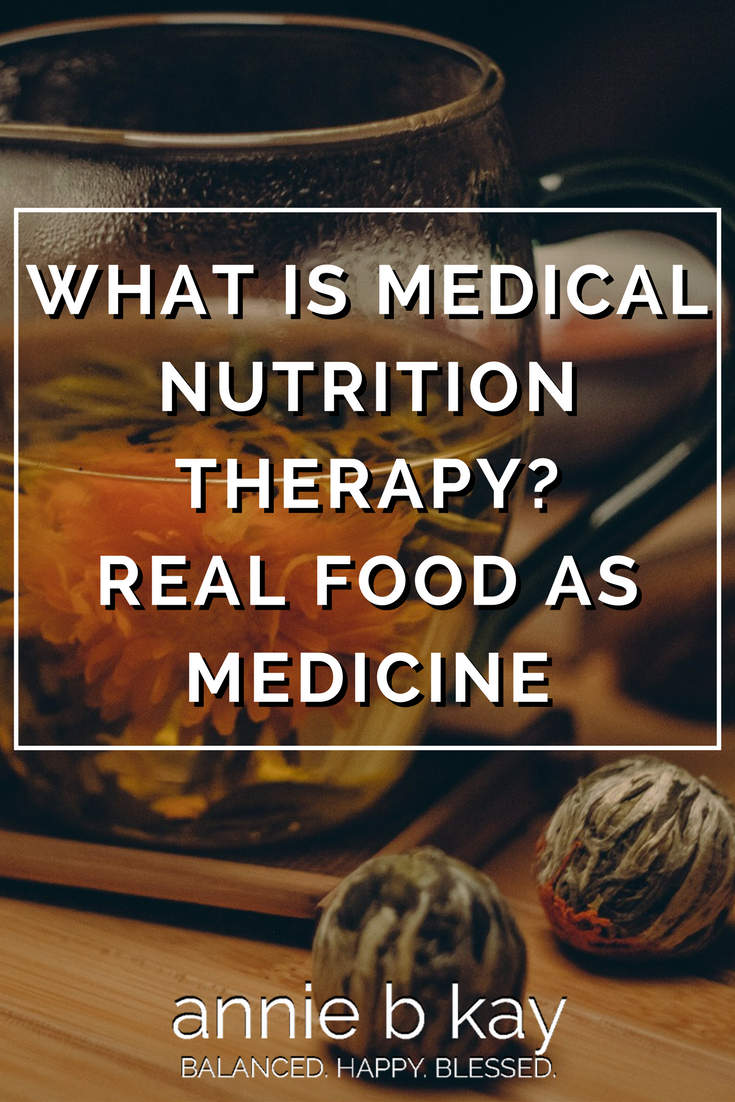
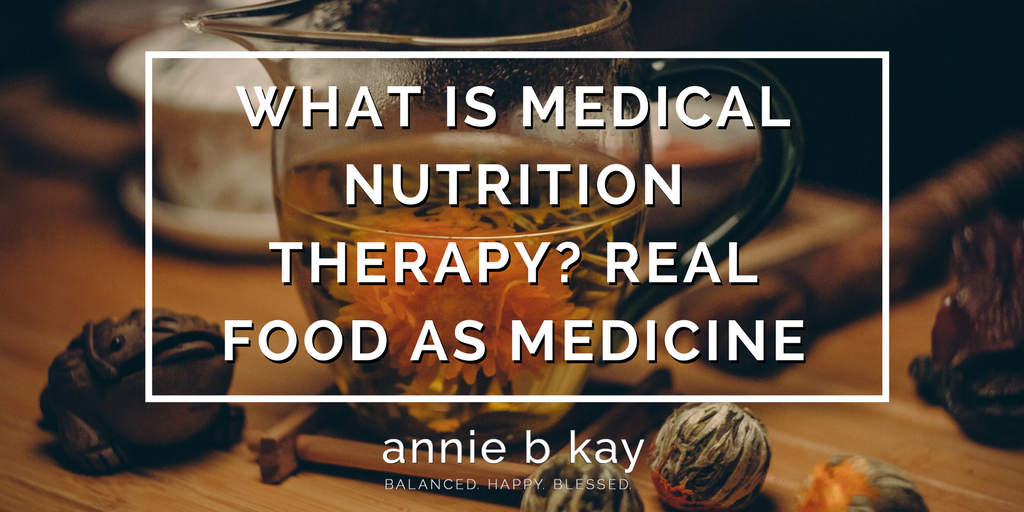
We are in the era of the nutritionist. There is so much confusion around food and nutrition, and so much wacky advice flying around. This while Americans are just not able to make it to the basics of healthful eating. Nutrition-related chronic diseases continue to be the primary health issues, and each of us has our own variation of health and disease.
Because we are in a time when so much that sounds like nutrition is actually marketing and bluster, and so many who call themselves experts are so far from it, confusion reigns. Enter RDNs (Registered Dietitian Nutritionists) and MNT (Medical Nutrition Therapy). If you know me, you know that I am a mind-body therapist – I use things like meditation and gentle yoga practice as tools to help us cultivate the best of ourselves, and soothe us as we gather our courage and strength to sing our song, to sing our note.
What is MNT?
There is a large body of evidence that tells us how to manage a range of health and medical conditions with food and nutrition. MNT, or medical nutrition therapy, uses that evidence and through a qualified therapist, translates that evidence into healing. While there is a range of nutritionists operating today, with various levels of education and experience, and I honestly believe there is room for everyone, I am partial to those who have a 4-year science degree and access to the Academy of Nutrition and Dietetics Knowledge Center for working with people with a medical condition. I am biased for sure, being one who sweated through all that nutritional biochemistry and worked in an ICU (intensive care unit of a hospital) writing TPN (total parenteral nutrition) orders to keep people alive until they could eat. Then I taught at Kripalu for nearly a decade, watching how mind-body used skillfully helped people with the will and knowledge transform. The combination of clinical skills and experiential practice are, in my opinion, the sweet spot when it comes to healing nutrition-related issues.
What conditions are we talking about?
There are guidelines for a range of medical conditions. Those I am well-versed in include:
- Weight gain – from adolescents to adults, and family-based, for any reason
- Eating Disorders, emotional eating and disordered eating
- Unexpected weight loss due to cancer, HIV/AIDS or other chronic condition
- Pre-diabetes and diabetes
- Cancer – prevention, management and prevention of recurrence
- Heart Disease – prevention, management
- High Blood Pressure
- High Cholesterol
- Digestive approaches to auto-immune conditions (Fibromyalgia, Rheumatoid Arthritis, and others)
- Digestive distress due to:
- Irritable Bowel
- Crohn’s Disease
- Colitis
- Constipation
- Reflux/Heartburn
- Food Intolerance (lactose-intolerance, gluten, and others), and Allergies
I use an individualized approach. That includes an initial assessment of nutrition-related symptoms and medical history, review of nutrition-related labs and reports, and development of a custom way of eating that you enjoy and that adheres to evidence-based practice.
We then co-create a plan to get there – your way. There is no such thing as failure, no such thing as relapse in this world – but there is learning, through loving self-compassion, how to navigate your life in its fullness. It’s a dance of mindful skillful effort, and surrender (that’s yoga!).
Within that list, do you specialize?
While I can help address any of these conditions, and they all have relating threads, I particularly like to work with weight, women in midlife, and digestive issues. I have also had a personal experience with cancer, so helping people with that interests me.
How much does it cost?
Depends. I am a licensed nutritionist in the state of Massachusetts. If you have a medical condition and live in the great state of Massachusetts, or another state that does not have state licensure, it is worth it to give your insurance company a call to see if our work together can be reimbursed. For this, you will likely need a referral from your primary care doctor.
If you are not insured, in another state with licensure or your insurance doesn’t cover, then you are what clinicians call private pay. It’s likely that our work together could be included in your health spending account if you have one.
Bottom line, if you value your energy level and lifestyle, it’s worth it to have a skilled coach to help you move forward.
My rates are $150/hr, and most people I work with do an initial assessment, then a half-hour twice monthly for 2 months, then monthly for 4 months.
Tell me about telehealth
I’ve partnered with a practice-management group called Healthie. They provide an interface for us to work through, including journaling, billing and video conferencing. So, we can meet face to face in the comfort of your own home! I think telehealth is part of the future of medicine, and I am excited to be part of it.
Ready to make the change? Let’s do it – Make an appointment now .
Questions? I’m all ears.
Be well,
Annie
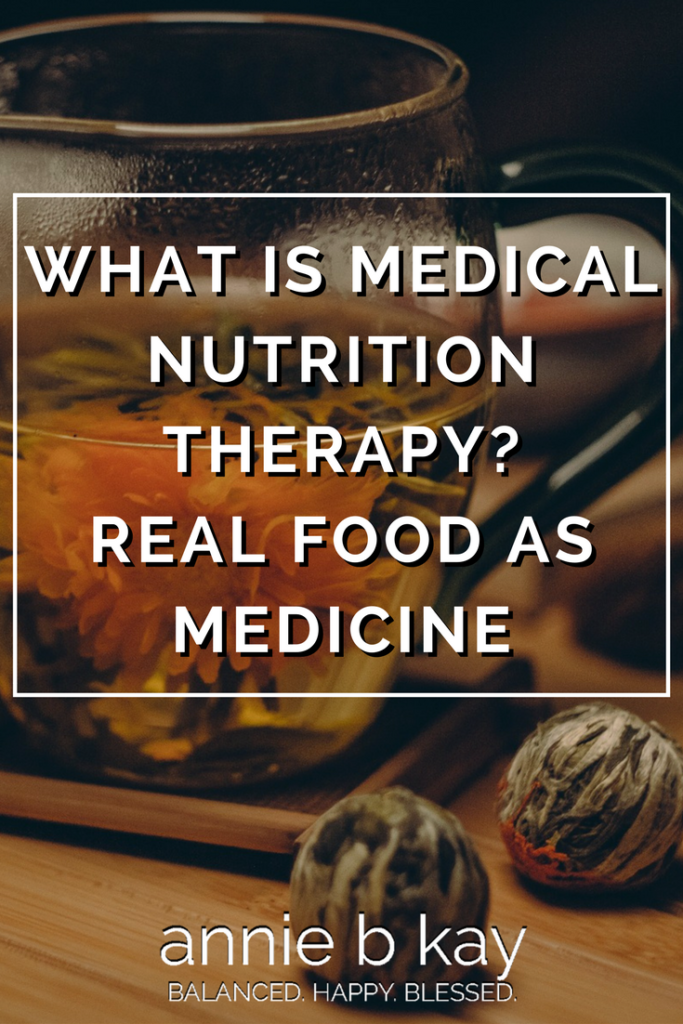
Pinterest
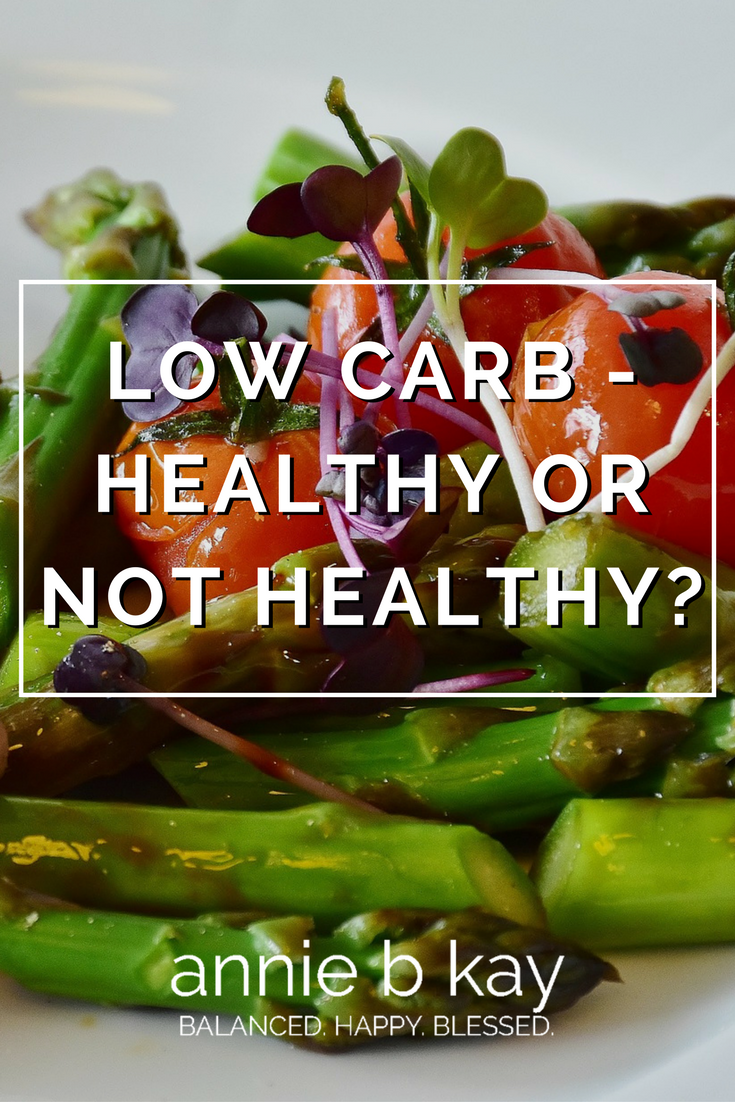
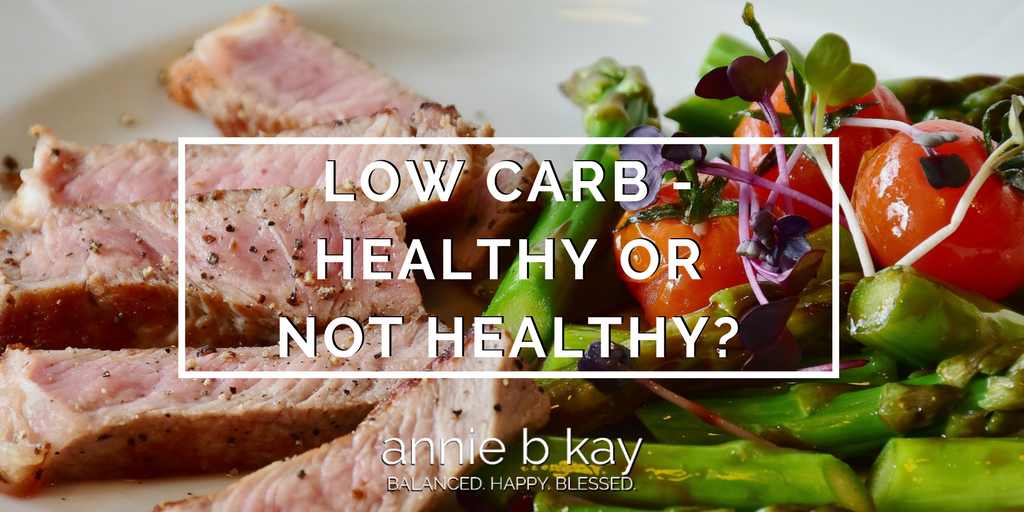
Bread. Chewy crusty bread dipped in a fantastic olive oil and a bit of sea salt. Nutritional friend or foe?
Giving up bread, potatoes, pasta, and even beans because they are carbohydrate-rich foods is a decades-old strategy that’s been presented in a wide variety of popular diets, including Atkins, South-Beach, Paleo, UltraMetabolism, and now Bright-Line.
Just what is a low-carb diet, is it healthy for all, for some or no one?
If you ask 10 people just what a low-carb diet is, you’ll get 10 different answers. That’s because the real clinical data on just what a low-carbohydrate diet is and if, how and who it helps is cloudier than you’d imagine if you believe what you read in the popular press. So, let’s begin with what a low-carbohydrate diet is and is not.
Carb Basics
Carbohydrates break down into sugars and are the energy currency of the body. We need sugar (glucose) for brain function and energy. Most glucose (what the sugar carb breaks down to and the fuel for the body) comes from carbohydrate-containing foods, but the body can also convert protein and fat into glucose (inefficiently and with side effects).
The National Institutes of Health (NIH) set a recommendation of 130 g/day of carbohydrate, based on the amount of glucose needed by the brain and body. The Institute of Medicine (IOM) recommends that 45-65% of daily calories come from carbohydrate. The IOM also set a fiber intake recommendation of 25 g/day for women, and 38 g/day for men.
For comparison’s sake, one serving of carbohydrate (a small slice of bread, or half a banana) contains about 15 g of carbohydrate. If the bread is white bread, it will not have much fiber nor vitamins and minerals unless they are added in the process of fortification. The half banana has about 3 1/2 g of fiber and is a good source of vitamins B-6 and C, potassium and other minerals. So, the banana is what a nutritionist would call more nutrient-dense – that is, calorie for calorie, it gives you lots of nutrients – it’s a higher quality carbohydrate than the bread.
To understand why we’re so low-carb crazy, let’s look at the Standard American Diet (yes, SAD). American men are eating about 287 g of carb per day, and women about 177 g. One-quarter of this carbohydrate intake is from added sweeteners (sugar). Added sweeteners have no nutritive value – not one vitamin or mineral, yet are packed with energy (calories) and absorb very quickly from the gut into the blood stream. How rapidly sugar is absorbed is one of the problems with a highly refined diet high in processed foods (which often acts like just more sugar) and sweeteners – they make you hungry for more. Fiber (which slow the rate that sugar is absorbed from the gut into the blood stream) intakes are about 17 g for men, and 13 g for women. Please note that these intake numbers are changing and not in a more hopeful and healthy direction. Get the picture?
American are eating plenty of carbohydrates, and the type of carbohydrate we are eating is high in sugar and low in fiber. Really low quality, low-nutrition food and lots of it.
A Low-Carb Diet is…
More than the switch from flour and processed grains to whole grains. It’s more than giving up sugar.
A low-carb diet dips below that 130 g/day recommendation of carbohydrates. The most restrictive phase of the Atkin’s diet has 20 gm of carbs in it. When you head down to this level of carbs you are getting your energy from fat and protein. This puts you into ketosis, which is the creation of ketones. While not dangerous in the short term if you drink plenty of water to help your kidney’s flush the ketones out of your body, a common side effect is nasty (nail polish) breath and sweat. It makes you smell, but you’re losing weight and not hungry. My opinion is that over time, this is a very hard diet on your body, and there’s no good data that shows over time people lose more and are healthier from this strategy than others.
So, what do you give up to follow a low-carb diet?
Bread, flour, all grains, even whole grains 🙁 , all fruit :(, starchy vegetables 🙁 like sweet potatoes, corn, peas and squash, beans :(, usually alcohol and of course sugars and sweeteners.
What do you eat?
Lots of meat, fish. Lots of fat. Non-starchy vegetables (which I find many people forget). Usually nuts and nut butters. There are a slew of processed low-carb foods of questionable quality.
Ketosis is different from diabetic ketoacidosis which is a much more dangerous condition of too little insulin and resultant high blood sugar.
Does it work?
Like any highly restrictive elimination diet, low-carb will work because you are eating less. It’s energy-balance basics. What’s handy about low-carb diets is that when you increase your protein and fat intake, you are less hungry than if you ate carbohydrates. So, as a jump-starter to healthier eating and a means of feeling the promise of a lighter body, they can be helpful.
Over the long-term, though, this pattern suffers from what all weight-loss diet patterns suffer from – they are hard to stick with over the long-term and ultimately people struggle to maintain them. There are some additional concerns about this pattern, too. I’ve listed them below.
What the Low-Carb Proponents Forget to Mention
- Your body adjusts to low carb and burning fat as fuel. When you eat a carb again you can become a super-efficient fat-producing machine. So, only do this if you are going to maintain it for the duration.
- A risk for constipation increases – drink lots of water. Your poor kidneys are working triple-time. If you do low-carb, you’ve got to eat your non-starch vegetables, which is a source of fiber that will help prevent constipation. Drink drink drink water.
- Low-carb diets tend to be extra high in saturated fat. While a bit of saturated fat, particularly if it comes from healthful sources like grass-fed organic dairy or grass-fed meats, can be fine, even healthful. When you are eating large amounts of poorer-quality saturated fats, however, the literature still says (despite what you’ve been told of late) you are increasing your risk of heart disease. Sorry. We really don’t know the long-term effects of managing your weight with this strategy. Regular mass-produced bacon, red meat, cream cheese, and butter in limitless qualities is just not healthy.
- Because the glucose you get from carbohydrates is the brain’s (and body’s) preferred fuel source, many following this diet complain of low energy and foggy thinking.
- Most of the quick weight you lose is from water – not fat.
- When you eliminate whole categories of foods, you increase your risk for inadequate nutrition – and low-carb is usually low in a host of vitamins minerals, antioxidants, and fiber. I see this over and over again. Over time, you increase your risk for disease and undermine the smooth functioning of your body.
The Bottom Line?
If you have issues with blood sugar like pre-diabetes, or diabetes, low-carb can be a great strategy to get your blood sugars under control. I’ve seen it work quite a bit. If you know you are over-doing sugar and want a short-cut to moderating, a few days (I find 5 does the trick) of low-carb tends to reduce your cravings. Work with a qualified nutritionist to ensure your diet is rich in nutrients while you do this.
For most of us, let your carb-savvy diet be minimal in refined sugar and refined carbohydrates (cereals, breads, and sweets like cookies and cakes). We all live with or around families and friends, and if your family is anything like mine, cake is part of social events. Have a bite, or a slice and enjoy it. Then get back to your regular practice of whole-food plant-based eating.
The diet that has the most evidence for long-term health is a whole-foods, plant-based diet.
Enjoy nutrient-dense high-quality whole carbohydrates you tolerate like whole grains, whole fruit, vegetables including beans, sweet and white potatoes and other starchy vegetables. If you struggle with weight, have these higher carbohydrate foods with a meal that balances whole food carbohydrates, protein, and fat. A bit of each. The Oldways Ancestral plates do a good job.
We each have a balance of eating, managing stress (which I think is a major cause of weight gain today, in addition to poor-quality food), being physically active in ways you enjoy, and self-acceptance that works. If you struggle with weight, only do the lifestyle changes that you continue forever more. That add to your life rather than restrict. Over time, you will build a healthy and flexible lifestyle.
If you love bread (like I love bread), and are thinking about managing weight, have a little – just not every day at every meal. I think of bread like I think of dessert – it’s a special treat, not an everyday part of my diet.
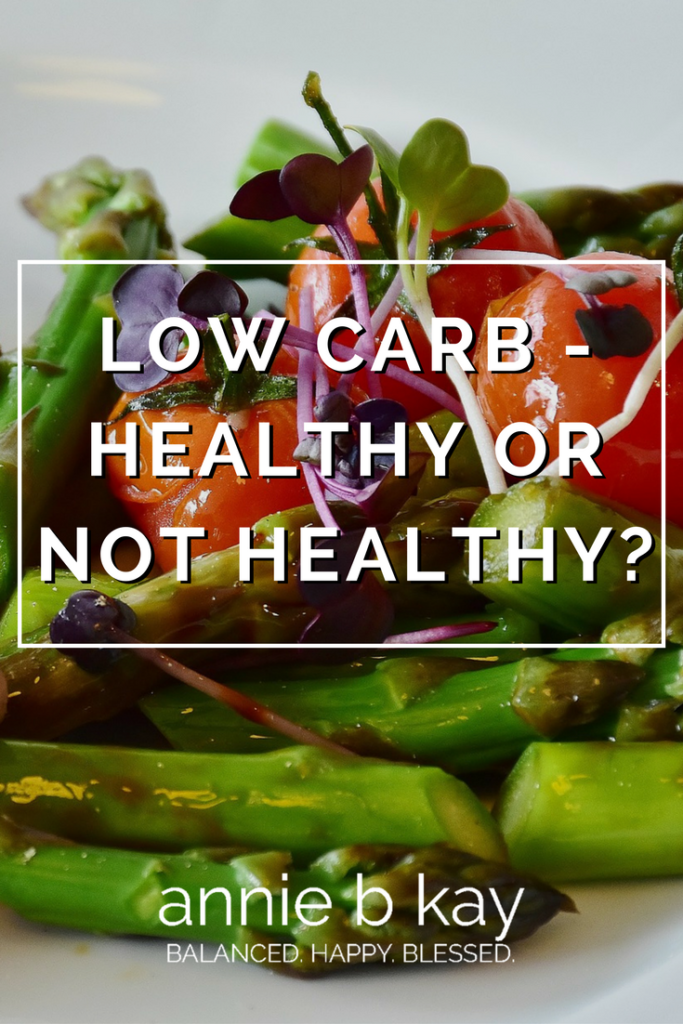
Pinterest
Research describing just how the ancient Indian practice of yoga eases behavior change continues to grow. That’s great news for the millions of people with type 2 diabetes and other chronic diseases who want to practice lifestyle medicine: to be physically active, to rest in constructive ways, to eat a healthier diet and to be socially connected. In practice, however, many people struggle to maintain (or shall I say juggle) healthful lifestyles in today’s toxic and obesogenic food environment where opportunities for movement seem limited.
It turns out that yoga really does change you from the inside out. Clinical evidence is mounting.
Yoga, a system of practice originating in ancient India, provides the modern practitioner accessible tools to ease behavior change for those who desire to follow healthy lifestyles yet struggle to sustain change within today’s toxic and obesogenic food environment. New understanding of the neuroscience of lifestyle and the emotional nervous system, and advances in genomics provide insight into likely mechanisms underlying observed benefits of yoga for nutrition-related chronic disease (including type-2 diabetes).
I’ve been thinking about just how and why this works for decades. In 2007, when my first book, Every Bite Is Divine came out, I had been teaching yoga for nearly ten years, and had experienced the tremendous internal shift that so many practitioners describe. I just felt very different – better. At that time, I was a Registered Dietitian with over a decade of experience working with individuals whose very lives depended upon making lifestyle change yet who just couldn’t do it. At the same time, I myself struggled with weight and eating.
Back then there really weren’t a lot of studies exploring what I was describing. We were all aware of Herb Benson’s work at Harvard, and Jon Kabit Zin’s work at U MA, and there were some interesting studies out of India. Now, nearly ten years later, yoga for weight is seemingly everywhere, and there are even calls for an integrated research initiative on yoga for diabetes. It turns out that while I was teaching yoga and talking about how great it was (and my clinical friends nodded lovingly as they backed away as you might with a potentially crazy sister), neurobiologists and geneticists were hard at work figuring out just what I was experiencing. That yoga changes you.
Over the next months, in preparation for my second book (written with my colleague Dr. Lisa Nelson), Yoga and Diabetes: Your Guide to a Safe and Effective Practice, published by the American Diabetes Association this summer, I’ll be describing the data on just how yoga does what it does. I’ll be talking about how to find a qualified yoga teacher who can help you, and how to go about developing a practice that works. Join me for this hot discussion!
In the meantime, here’s some help with beginning a yoga practice.
And here’s a guide for getting started with healthy eating.

OK folks, it’s that time again. The Scientific Report for the Dietary Guidelines for Americans (DGA) is out, and it’s time for all nutritionists and foodie/activitists to dive in and weigh in. You have until early April to submit your comments.
Better process
While there is always the plus – minus of what each of us thinks the panel got right and wrong, I want to give a plug for the improvements in the process that have happened over the past decade. It’s much easier now to look behind the curtain of the recommendations and read and review the data upon which they are based. I like it! Every five years, this exercise helps me do an overview review of what the mainstream science says about food and nutrition. I encourage you, if you are interested, to check it out – at the very least, you will learn more about what the mainstream research actually says.
Evaluating evidence
One of the issues in diet debates today is that many of those with an opinion don’t actually know how to evaluate evidence or don’t take the time to. There is a whole lot of junk science, tiny studies and early data out there being used as consensus and the basis for diets. That’s part of the outrage over the DGA every time they come out – a misunderstanding of what the data actually says (and what the data actually is). The committee really does need to rely on the current state of high quality literature as the basis of their recommendations, and there have been some disasters in the past when they made recommendations that seemed to be true that were later proved false or incomplete. The betacarotene story is an example (the Institute of Medicine of the NIH set the recs high, then that level was found to increase cancer risk in smokers – oops).
The problem is that well-designed studies in major scientific centers are often funded by the food industries that benefit. And we all see that the whole truth of nutrition (and life) is that the fewer packages you buy, the better off you’ll be. So, the only science taking a good look at whole nutrition available to integrative dietitian nutritionists and other foodies is often in smaller studies sometimes not as well designed. Eventually, the whole truth will come out. Unfortunately, it will come out much more slowly than if we had a free unbiased system of scientific inquiry around food and nutrition. The full true story of human nutrition is not yet told by the Dietary Guidelines for Americans. In an imperfect world, it’s a start.
Weaving science & wisdom
Here’s how the DGA process influences my own food and eating philosophy.
I begin by knowing what the DGAs say and understanding the research basis for them. From there, I draw from scientific integrative models like functional nutrition, traditional wisdom systems like Western herbalism and Ayurveda, a healthy respect for human intuition (mine and my client’s) and an understanding that how and what we each eat has implications not only for our own bodies but for everything around us and the earth itself.
In the end, plants are the healers, eating clean whole high quality food made with love that honors who we are and the lives we lead will take most of us through our nutritional lives in balance. If you’re not in nutritional balance, a skilled integrative dietitian nutritionist can help you get there.
So much to talk about with the DGAs. Have you reviewed the data and recommendations? What do you think?









